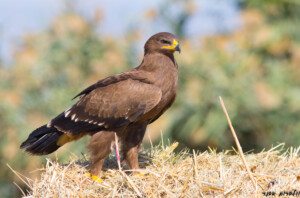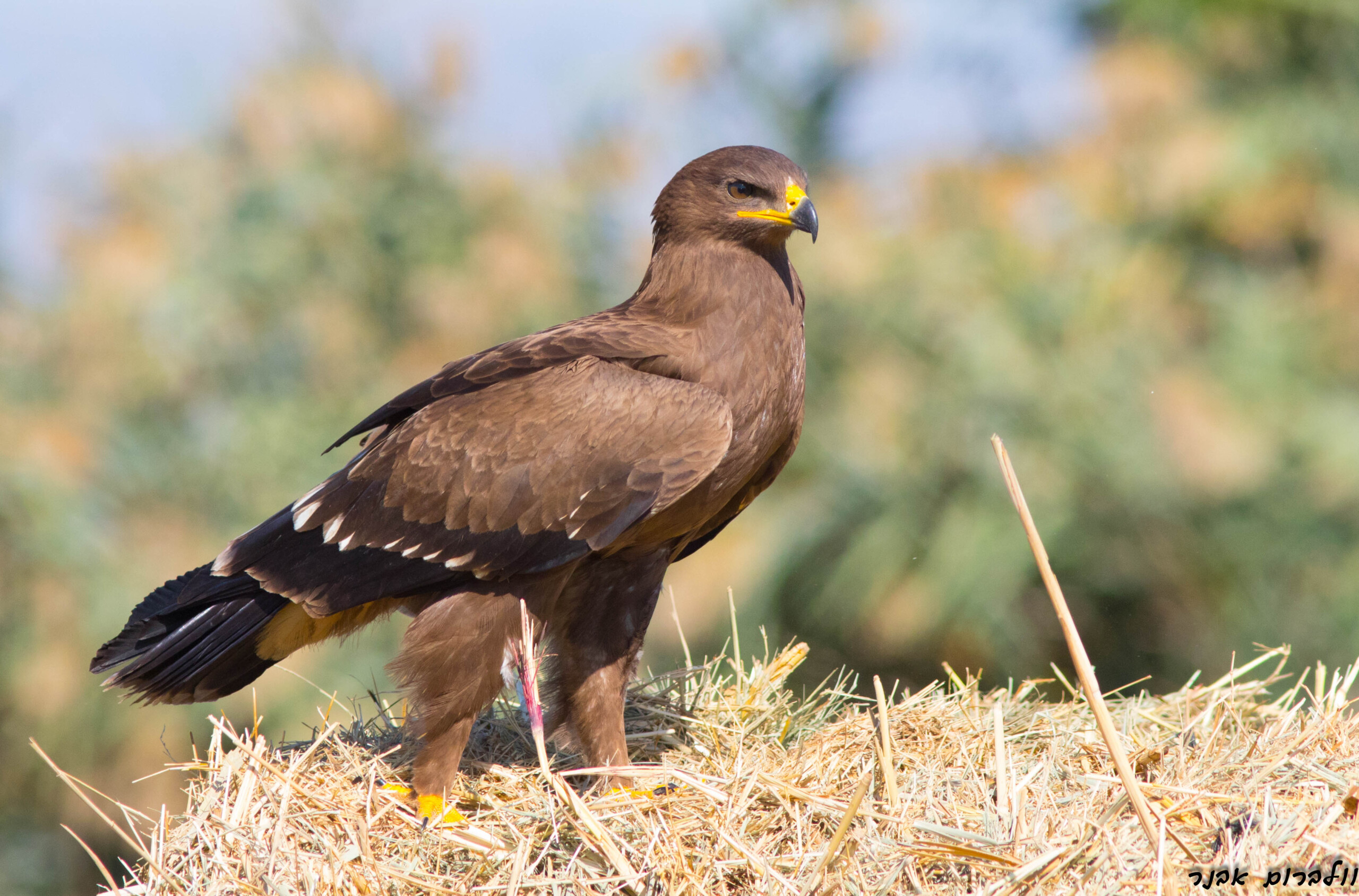
LINKED PAPER
Weak niche partitioning between closely related sympatric Greater (Clanga clanga) and Lesser Spotted Eagles (C. pomarina). Väli, Ü., Abel, U., Nellis, R., Sein, G., Sellis, U., & Mirski, P. 2022. IBIS. DOI: 10.1111/ibi.13088. VIEW
Species with completely overlapping niches cannot coexist. This so-called ‘competitive exclusion principle’ can force closely related species to adapt to slightly different niches (Hardin 1960). A compelling example of this phenomenon involves the Greater Spotted Eagle (Clanga clanga) and the Lesser Spotted Eagle (C. pomarina). Despite their recent divergence, these raptor species have already developed distinct preferences for different habitats. The Greater Spotted Eagle is commonly found in wetlands, where it hunts small mammals and birds, while the Lesser Spotted Eagle hunts for voles and amphibians on farmlands (Väli et al. 2017). However, the drainage of wetlands might have pushed the Greater Spotted Eagle into the niche of its evolutionary cousin.
Niche overlap
To investigate the extent of niche overlap between these raptors in Estonia, Ülo Väli and his colleagues tracked eight Greater Spotted Eagles and fourteen Lesser Spotted Eagles with GPS-tags. The data revealed that both species primarily forage on agricultural fields, although they use slightly different sections of the farmlands. Lesser Spotted Eagles prefer the intensively managed grassland, while the Greater Spotted Eagles use the more “natural” fields. This extensive niche overlap is also evident in their diet: both species mainly feed on Microtus voles.

Figure 1. Large overlap in the use of various land cover types by Greater (GSE) and Lesser Spotted Eagles (LSE) in Estonia.
Future trajectories
This study effectively demonstrates how human activity can break down niche differentiation between closely related species (Tucker et al. 2018). The disappearance of wetlands forced the Greater Spotted Eagle into agricultural fields where it now competes with the Lesser Spotted Eagle. The future interactions between these two raptor species remain uncertain. They might adapt to different niches within the farmland landscape, one species might outcompete the other, or they might merge into a single species through hybridization (Väli et al. 2010). Only time will tell.
References
Hardin, G. (1960). The competitive exclusion principle. Science 131: 1292– 1297. VIEW
Tucker, M.A., Böhning-Gaese, K., Fagan, W.F., Fryxell, J.M., Van Moorter, B. & Alberts, S.C. (2018). Moving in the Anthropocene: global reductions in terrestrial mammalian movements. Science 359: 466– 469. VIEW
Väli, Ü., Dombrovski, V., Treinys, R., Bergmanis, U., Daroczi, S.J., Dravecky, M., Ivanovski, V., Lontkowski, J., Maciorowski, G., Meyburg, B.U., Mizera, T., Zeitz, R. & Ellegren, H. (2010). Widespread hybridization between the Greater Spotted Eagle Aquila clanga and the Lesser Spotted Eagle Aquila pomarina (Aves: Accipitriformes) in Europe. Biological Journal of the Linnean Society 100: 725– 736. VIEW
Väli, Ü., Tuvi, J. & Sein, G. (2017). Agricultural land use shapes habitat selection, foraging and reproductive success of the Lesser Spotted Eagle Clanga pomarina. Journal of Ornithology 158: 841– 850. VIEW
Image credits
Top right: Lesser Spotted Eagle (Clanga pomarina) | Wolbrum Avner | CC BY-SA 4.0 Wikimedia Commons
Blog posts express the views of the individual author(s) and not those of the BOU.
If you want to write about your research in #theBOUblog, then please see here




